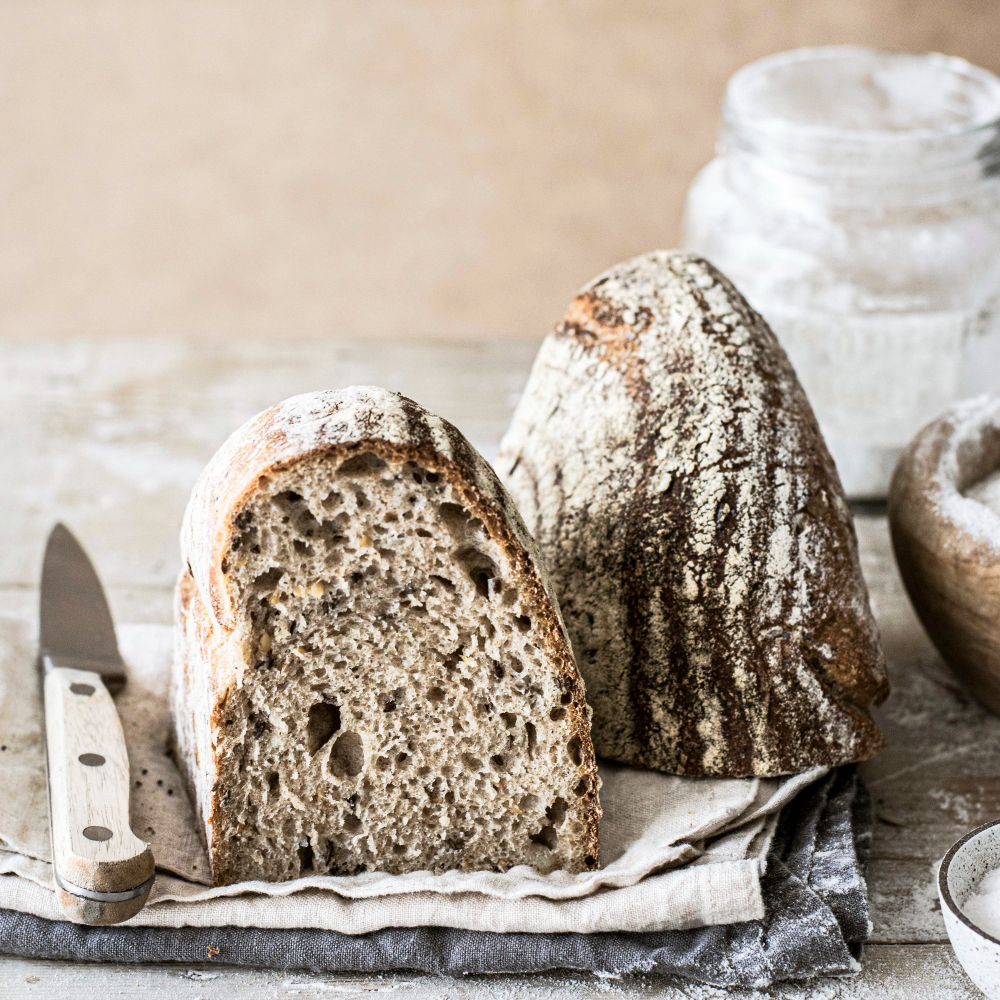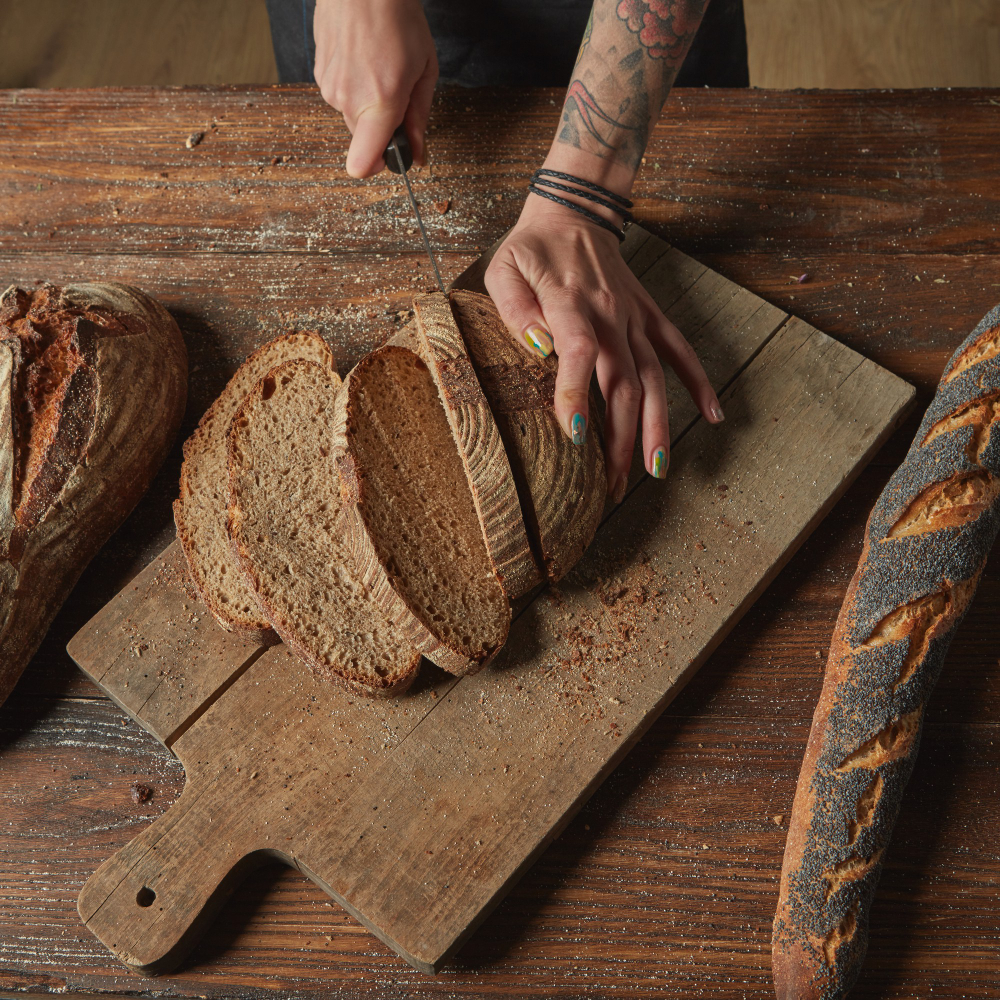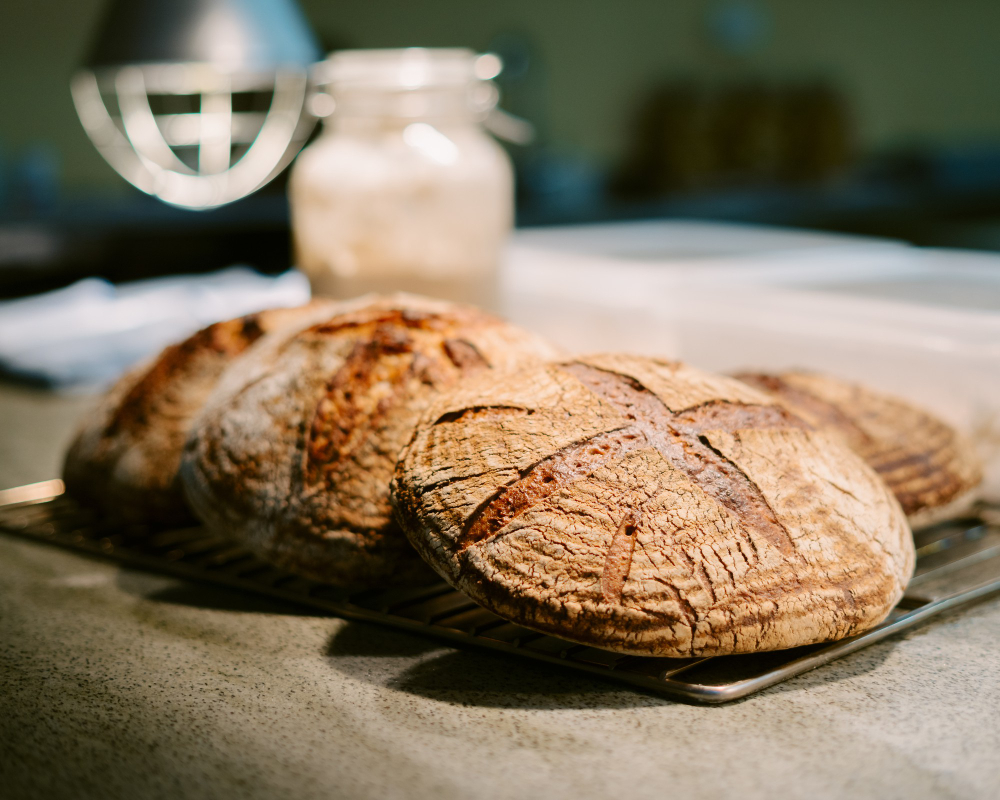Sourdough bread has captured the hearts of bakers worldwide for its unique flavor, health benefits, and the rewarding experience it offers. If you’re new to sourdough baking, this guide will walk you through the basics, helping you get started on your journey.
What Is Sourdough?
Sourdough is a type of bread made using wild yeast and lactic acid bacteria that occur naturally in the environment. Instead of using commercial yeast, sourdough relies on a fermented mixture of flour and water, called a starter, to leaven the dough. This process gives sourdough its characteristic tangy flavor and chewy texture.
Starting with a Sourdough Starter
The starter is the heart of sourdough baking. To create one:
- Mix equal parts of flour and water in a clean jar.
- Let it sit at room temperature, loosely covered, for 24 hours.
- Discard half and feed it daily with fresh flour and water until it bubbles consistently, indicating it’s ready for baking (usually 5–7 days).
Ingredients and Tools
For your first loaf, keep it simple. You’ll need:
- Flour (bread flour or a mix of bread and whole wheat flour)
- Water
- Salt
- Your sourdough starter
- A mixing bowl, bench scraper, kitchen scale, and Dutch oven or baking stone.
The Sourdough Process
- Mixing the Dough: Combine flour, water, and starter. Mix until no dry flour remains. Let it rest, then add salt.
- Bulk Fermentation: Allow the dough to rise for 4–6 hours, performing stretch-and-fold techniques every 30 minutes to develop gluten.
- Shaping: Gently shape the dough into a round or oval, being careful not to deflate it.
- Proofing: Let the shaped dough rise in a proofing basket or bowl lined with a floured towel, either at room temperature or in the refrigerator overnight.
- Baking: Preheat your oven with a Dutch oven inside. Bake your loaf at 450°F for about 45 minutes, starting with the lid on to trap steam, then removing it for the crust to develop.
Troubleshooting
- Dense Loaf? Your dough may have been under-proofed or over-handled.
- Flat Loaf? Ensure your starter is active and bubbly before mixing.
- Burnt Crust? Reduce baking time or lower the temperature slightly.
Tips for Success
- Be patient; sourdough is a slow process, but it’s worth the effort.
- Keep notes on your baking attempts to refine your technique.
- Experiment with hydration levels, flours, and proofing times as you gain confidence.
By understanding the basics and practicing regularly, you’ll be well on your way to creating sourdough loaves that delight your senses and nourish your body.






